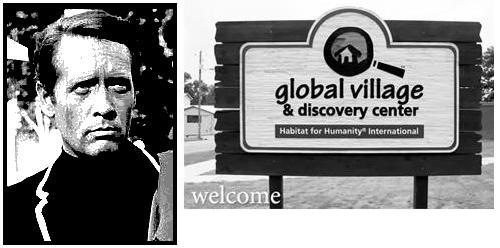In memory of Lenny Lipton.
* See Dimensions and Positioning.
From The Chronicle of Higher Education on March 2, 2017 —
|
These days, in a world totally dependent on microprocessors, lasers, and nanotechnology, it has been estimated that 30 percent of the U.S. gross national product is based on inventions made possible by quantum mechanics. With the booming high-tech industry and the expected advent of quantum computers, this percentage will only grow. Within a hundred years, an esoteric theory of young physicists became a mainstay of the modern economy. It took nearly as long for Einstein’s own theory of relativity, first published in 1905, to be used in everyday life in an entirely unexpected way. The accuracy of the global positioning system, the space-based navigation system that provides location and time information in today’s mobile society, depends on reading time signals of orbiting satellites. The presence of Earth’s gravitational field and the movement of these satellites cause clocks to speed up and slow down, shifting them by 38 milliseconds a day. In one day, without Einstein’s theory, our GPS tracking devices would be inaccurate by about seven miles. — Robbert Dijkgraaf, Director, Institute for Advanced Study, Princeton |
The above paragraphs are clearly propaganda, not physics.
For "It has been estimated," see …
The "without Einstein 's theory" statement may or may not be correct.
See the lengthy discussion at …
http://physics.stackexchange.com/questions/1061/
why-does-gps-depend-on-relativity .


Related material:
The phrase
"Habitat Global Village"
in the previous entry.
Marshall McLuhan was
apparently the originator
of the phrase
"global village."
The phrase, coined by McLuhan,
a Catholic, should be associated
more with Rome than
with Americus, Georgia.
"The association is the idea."
— Ian Lee, The Third Word War

As Blake Well Knew
From The New York Times:
Edsger Wybe Dijkstra, whose contributions to the mathematical logic that underlies computer programs and operating systems make him one of the intellectual giants of the field, died on [August 6, 2002] at his home in Nuenen, the Netherlands. He was 72….
Dr. Dijkstra is best known for his shortest-path algorithm, a method for finding the most direct route on a graph or map….
The shortest-path algorithm, which is now widely used in global positioning systems and travel planning, came to him one morning in 1956 as he sat sipping coffee on the terrace of an Amsterdam cafe.
It took him three years to publish the method, which is now known simply as Dijkstra’s algorithm. At the time, he said, algorithms were hardly considered a scientific topic.
From my August 6, 2002, note below:
…right through hell there is a path, as Blake well knew…
— Malcolm Lowry, 1947, Under the Volcano
Powered by WordPress